Not a member yet? Sign Up!
Info
Please use real email address to activate your registration
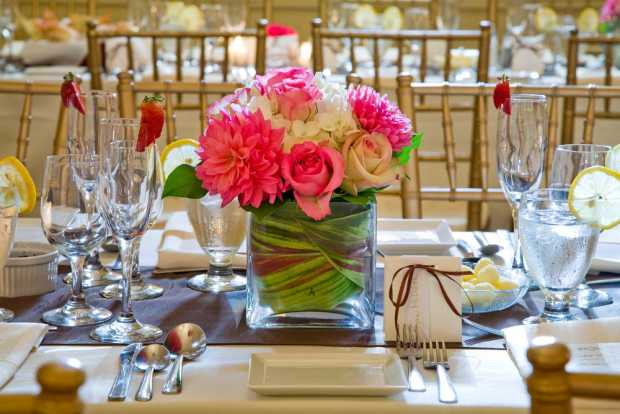
The Kitchen Reader assignment for March 2014 is an encyclopedia-like book with a long title: The mere mortal’s guide to fine dining: from salad forks to sommeliers, how to eat and drink in style without fear of faux pas.
Colleen Rush, the author, wrote that the book was born out of her fine dining anxieties, like whether she has the right table manners, what wine to choose and how to face condescending servers. She begins the book by describing her fear when entering Jean-Georges Restaurant in Manhattan, New York.
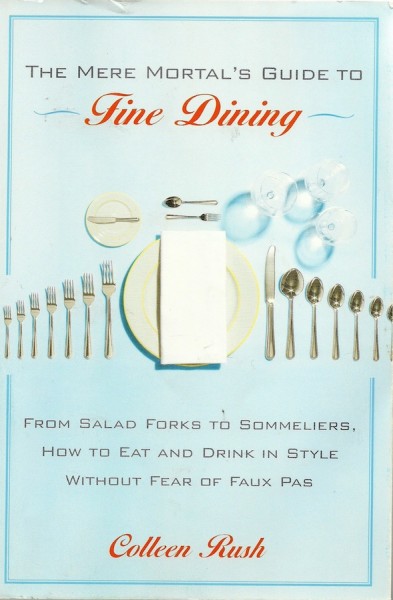
At your service
Reading through the pages I just had to smile, remembering my own confusions when reading menus in fancy restaurants.
Admit it: You nod and smile and pretend to understand the waiter as he rattles on about pan-seared this and braised that from the list of specials.
Lucky for us, readers, Colleen not only reminds us of awkward situations but also shares the tricks on how to act properly and enjoy gourmet meals.
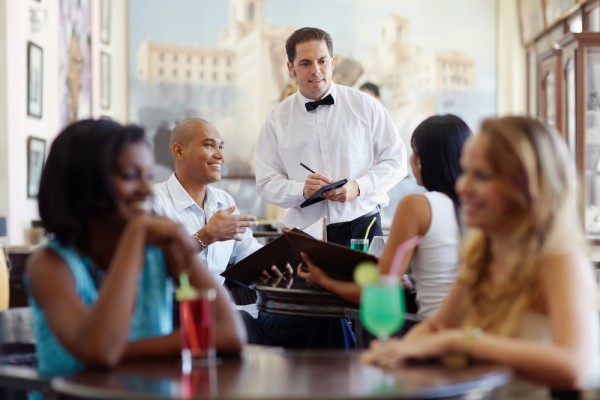
Like all artists and craftsmen, the culinary crews in fine dining establishments take a tremendous amount of pride in what they do and what they know.
I do agree with her statement, but almost put the book down when reading Chapter 1, Relax- Help is on the Way.
Telling readers how to suck up to reservationists and how to slip cash into the right hand to get a better table on the first pages of the book only make me apprehensive to visit classy restaurants.
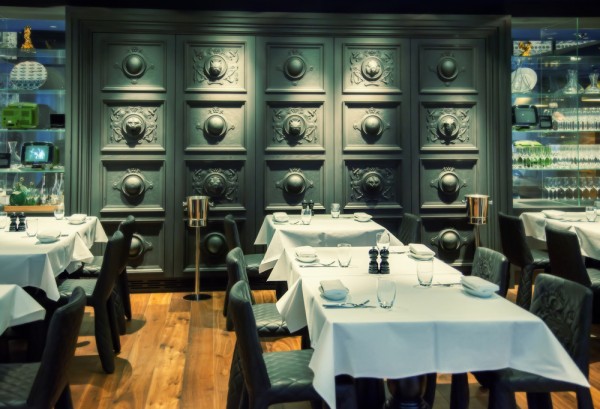
I would rather read about the perks of fine dining establishments such as prime cuisines, beautiful table settings and elegant decors, before going through the nitty-gritty of back of the house staff such as sous-chefs, garde-mangers and pattisiers.
The next chapters of the book, nonetheless, are very informative and entertaining.
Degustation menu
In this 224-page book Colleen Rush proves herself as a professional writer editor and eater with works spread in magazines such as Allure, Glamour, Redbook, Ladies Home Journal, Maxim, and SELF.
Chapter 2 is the essence of fine dining. Titled Wherefork Art Thou, readers learn about the right glassware. In addition to the plates and the utensils, there may be four different shape of glasses set for one person: a water goblet, a red wine glass, a white wine glass, and a champagne flute.
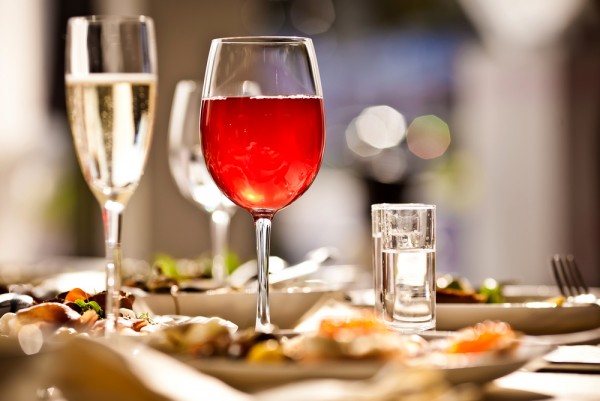
Always pass the salt and pepper together, even if a table-mate asks for only one of them, so that dinner guests won’t have to search for orphaned shakers.
Chapter 3, Following Orders, may as well be titled Menu 101 since this is where I learn how to deal with a list of menus as thick as a book with French words in it as in most fine dining establishments.
A classic Italian meal begins with antipasti (such as insalata caprese or bruschetta), to primi (a dish serves in bowl such as soup), secondi (main course) and contorni (vegetables), and ends with dulci (dessert).
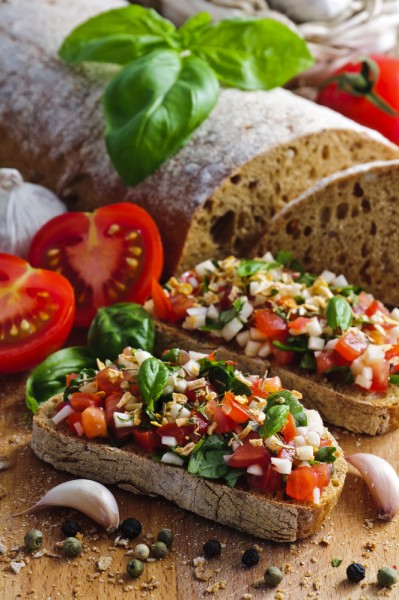
Tasting Menus (degustation menu) is a way to show chefs’ signature dishes. They are usually available in fine dining restaurants and consist of a series of small portions that reach up to 14 servings at The Fat Duck in Bray, UK as written in our earlier blog post here, and 21 servings at The French Laundry in Yountville, California, USA.
Prerequisites to fine-dining
The section on Abstaining for Epicures: What to Drink if you’re Not Drinking in Chapter 4, Booze Clues, prior to Chapter 5, Wine Uncorked, wins my heart. I don’t drink alcohol and always question whether I offend dinner hosts if I don’t take their offer of fine wines. Colleen quoted Paul Roberts, the master sommelier at The French Laundry.
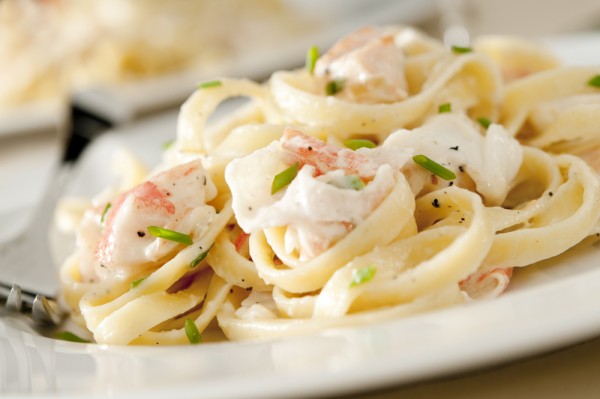
With non alcoholic pairings, you really only want to attempt complimentary pairings, like ordering a green tea to go with a green tea-marinated fish, or whole, fatty milk to go with a rich, creamy pasta course.
Chapter 6, Pasture to Plate; Chapter 7, Season’s Eating and Chapter 8, Say Fromage, are full with tips on getting the best meat and poultry, seafood, vegetable and cheese. Quality ingredients are indeed the prerequisites for fine dining.
If you want to get fancy, you might consider the origin of the cheese, and select an international mix (French Saint Andre, Spanish Manchego, and English Stilton), or localize it to a specific region (Parmigiano-Reggiano, Taleggio, and Gorgonzola – all Italian cheeses).
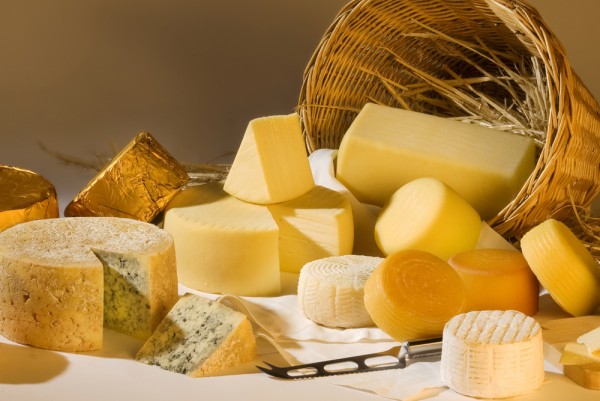
Palate Prep, Chapter 10, derives the knowledge acquired by sensory scientists. I have yet to enhance by meals by a good palate and understanding the role of taste (bitter, sweet, salty, sour) and flavor (taste, smell and texture).
This book, that I also reviewed for Foodies Read 2014, was first published in 2006; however, the contents are still relevant almost 8 years after.
Who's who in fine-dining
Chapter 9. Lost in Translation and Chapter 11. What the Food Snob Knows describe all aspects known to foodies such as dining in international settings, molecular gastronomy, food trends, and who’s who in fine dining a.k.a the celebrity chefs.
The chefs she noted in addition to Jean-Georges Vogerichten include Ferran Adria, Mario Batali, Daniel Boulud, Alain Ducasse, Marcus Samuelsson, and Charlie Trotter. Also on her list is Alice Waters, the pioneer of cooking with the finest and freshest seasonal ingredients that are produced sustainably and locally.
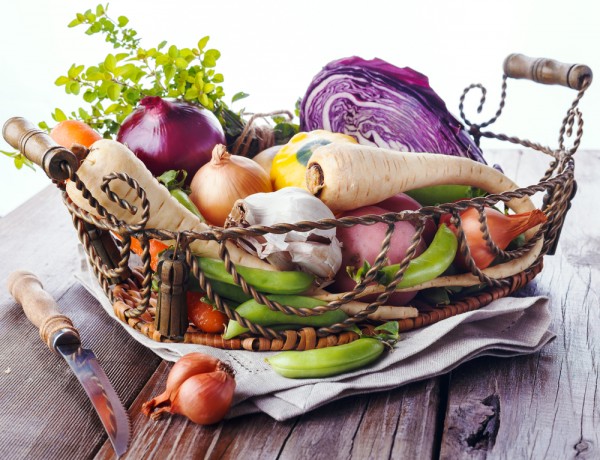
Colleen Rush, however, brings readers back to earth with her last part, Chapter 12, Eatiquette. In this chapter, there are answers to 15 questions ranging from dressing properly, money to spend and eating with hands, to sending food back, the rules of tipping and what to do with leftovers.
If you are dining with clients, your boss, or anyone you are trying to impress, walking out with a bag full of leftovers might not jibe with the classy image you are trying to project.
App version
The book is in black and white and has only very minimal picture but I was absorbed by it due to Colleen Rush’s fine skills in weaving words and knowledge.
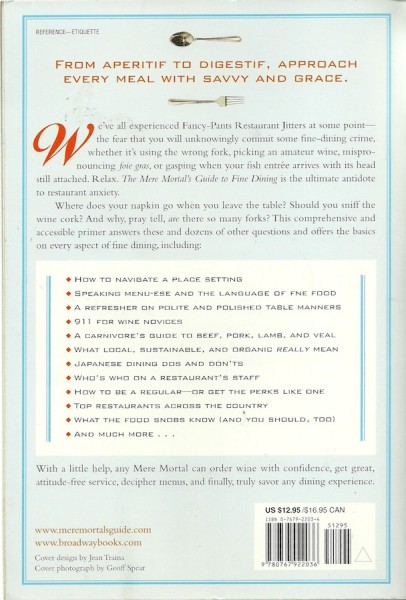
In this digital era, I will not be surprised if pretty soon there will be a colorful App Version for "The mere mortal’s guide to fine dining: from salad forks to sommeliers, how to eat and drink in style without fear of faux pas."
The App Version of the book will surely make it easier for me to steer clear of fine-dining crime.
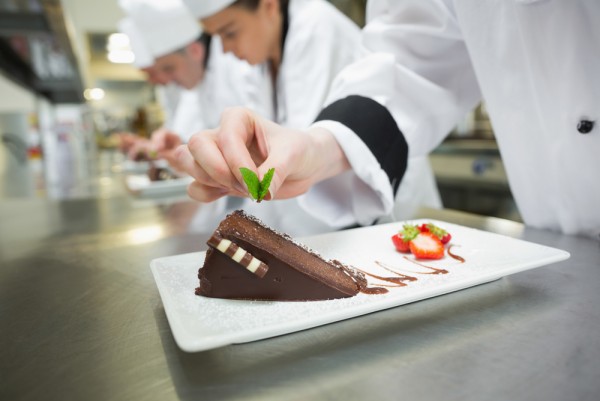
-------------------------
Text: Amanda Niode
Images: SHUTTERSTOCK. Cover: Mayakova; Waiter & Menu: Diego Cervo; Restaurant Interior: Ariadna de Raadt; Glasses: Andrey Bayda; Bruschetta: Christian Draghici; Pasta: Cobra Photography; Cheese: Manuel Alvarez; Vegetables: Yulia Elstentein; Cake: Wavebreakmedia.